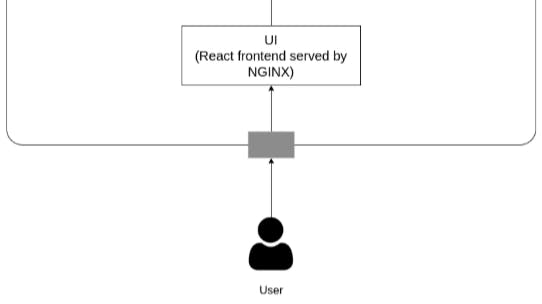What Is Cryptocurrency? A Simple Explanation – CryptoMode

Cryptocurrency has become a buzzword in recent years, capturing the attention of investors, technologists, and the general public alike. But what exactly is cryptocurrency? In this article, we will break down the concept of cryptocurrency, its underlying technology, and its implications for the future of finance.
As digital currencies continue to disrupt traditional financial systems, understanding their mechanics is crucial for anyone navigating the modern economy. From everyday transactions to global investments, cryptocurrencies offer a new paradigm of money that emphasizes security, accessibility, and decentralization.
We’ll explore how this innovation has evolved from a niche experiment into a multi-trillion-dollar industry, influencing everything from personal finance to international trade.
Understanding Cryptocurrency
At its core, cryptocurrency is a form of digital or virtual currency that uses cryptography for security. Unlike traditional currencies issued by governments (also known as fiat currencies), cryptocurrencies operate on decentralized networks based on blockchain technology.
This means they aren’t controlled by any central authority, such as a bank or government, which reduces the risk of manipulation and allows for borderless transactions. Cryptocurrencies like Bitcoin and Ethereum enable users worldwide to transfer value instantly and at low costs, bypassing traditional banking hurdles.
Their appeal lies in empowering individuals with financial sovereignty, especially in regions with unstable economies or limited access to banking services.
What is Blockchain?
Blockchain is a distributed ledger technology that records all transactions across a network of computers. This technology ensures transparency and security, as each transaction is verified by multiple participants in the network.
Imagine a shared digital notebook where every entry is checked and approved by a group before it’s added, making it tamper-proof. Blockchain’s design prevents single points of failure, as copies of the ledger are stored on thousands of computers (nodes) globally.
- Decentralization: No single entity controls the blockchain, making it resistant to censorship and fraud. This structure contrasts with centralized systems like banks, where a single authority holds power, potentially leading to biases or failures.
- Immutability: Once a transaction is recorded on the blockchain, it cannot be altered or deleted. This is achieved through cryptographic hashing, where each block links to the previous one, creating an unbreakable chain of records.
- Transparency: All transactions are visible to anyone with access to the blockchain, promoting trust among users. While transaction details are public, user identities can remain pseudonymous, balancing openness with privacy.
That approach was introduced in Bitcoin: A Peer-to-Peer Electronic Cash System, which describes how proof of work secures history and assumes a new block roughly every 10 minutes for sizing calculations. In practice, the Bitcoin community documents that blocks are added about every 10 minutes on average, with variability from randomness in mining.
How Does Cryptocurrency Work?
Cryptocurrencies operate on a peer-to-peer network, allowing users to send and receive funds directly without the need for intermediaries like banks. Transactions are verified by network participants, known as miners, who use powerful computers to solve complex mathematical problems. This verification process, often called proof-of-work or proof-of-stake in newer systems, ensures the integrity of the network.
Once verified, transactions are added to the blockchain, and the miners are rewarded with newly created cryptocurrency. This process is known as mining. For instance, in Bitcoin’s case, miners compete to solve puzzles, and the winner adds a new block every 10 minutes on average.
Alternatives like proof-of-stake, used by Ethereum since 2022, select validators based on the amount of cryptocurrency they hold and stake, making the process more energy-efficient. Wallets, digital tools for storing and managing crypto, play a key role with private keys ensuring only the owner can access funds.
This system not only facilitates secure transfers but also enables smart contracts, automated agreements that execute when conditions are met, expanding crypto’s utility beyond simple payments.
The Rise of Cryptocurrency
Since the launch of Bitcoin in 2009, the cryptocurrency market has exploded in popularity. As of October 2025, the global cryptocurrency market size was valued at approximately $4.3 trillion. A widely cited adoption study estimates that about 562 million people owned crypto in 2024, up from roughly 420 million the year before making a 2025 figure above that level is plausible.
Bitcoin and Its Dominance
Bitcoin, the first and most well-known cryptocurrency, accounts for about 50% of the total cryptocurrency market capitalization in 2025. Its success has paved the way for thousands of alternative cryptocurrencies, often referred to as altcoins.
Created by the pseudonymous Satoshi Nakamoto, Bitcoin was designed as a response to the 2008 financial crisis, aiming to create a currency free from government control. Its fixed supply of 21 million coins mimics gold’s scarcity, earning it the nickname “digital gold.” Bitcoin’s dominance persists due to its first-mover advantage, robust security, and widespread recognition, influencing price trends across the entire crypto market.
Decentralized Finance (DeFi)
One of the most significant trends in the cryptocurrency space is the rise of Decentralized Finance (DeFi). Over 70% of blockchain projects in 2025 incorporate DeFi solutions, which aim to recreate traditional financial systems in a decentralized manner. DeFi leverages smart contracts to offer services like lending, borrowing, and trading without banks, democratizing access to finance for the unbanked population worldwide.
Decentralized Exchanges (DEXs): CoinGecko’s Q2 2025 industry report shows spot volumes on DEXs reached 876.3 billion dollars in the quarter, lifting the DEX-to-CEX ratio to a record 0.23 from 0.13 in Q1. Platforms like Uniswap enable peer-to-peer swaps, reducing fees and increasing privacy compared to centralized exchanges.
Total Value Locked (TVL): The total value locked in DeFi protocols exceeded $237 billion in 2025, marking a 150% increase from the previous year.
Non-Fungible Tokens (NFTs)
Another exciting development in the cryptocurrency world is the emergence of Non-Fungible Tokens (NFTs). In 2025, the number of NFT sales worldwide surpassed 40 million, with total sales exceeding $700 million.
NFTs represent ownership of unique digital assets, such as art, music, and virtual real estate, and have opened new avenues for creators and collectors alike. Artists like Beeple have sold NFTs for millions, while platforms like OpenSea facilitate marketplaces.
Beyond art, NFTs are expanding into gaming (e.g., play-to-earn models), real estate (virtual land in metaverses like Decentraland), and even identity verification. Despite market fluctuations, NFTs are evolving with utility-focused applications, such as tokenizing real-world assets like property deeds.
The Future of Cryptocurrency
The future of cryptocurrency looks promising, with projections indicating that the global cryptocurrency market could reach $11.71 billion by 2030, growing at a CAGR of 13.1%.
Environmental Considerations
As the cryptocurrency industry grows, so does the concern over its environmental impact. However, the carbon footprint of cryptocurrency mining operations has decreased by 50% in 2025 due to the adoption of renewable energy initiatives.
Shifts to energy-efficient consensus mechanisms, like Ethereum’s proof-of-stake upgrade, have drastically cut consumption. Miners are increasingly relocating to regions with abundant green energy, such as hydroelectric power in Iceland or solar farms in Texas. Regulatory pressures and investor demands for sustainability are driving further innovations, including carbon-neutral blockchains and offset programs.
Innovation and Development
The number of active blockchain wallets surpassed 200 million in 2025, and the number of active DeFi developers increased by 40%, indicating a vibrant ecosystem of innovation. Open-source communities are fostering rapid development, with tools like layer-2 scaling solutions (e.g., Polygon) addressing speed and cost issues.
Emerging trends include tokenization of assets, decentralized autonomous organizations (DAOs) for governance, and privacy-focused tech like zero-knowledge proofs. As adoption grows, collaborations between tech giants (e.g., Google Cloud’s blockchain services) and startups will accelerate real-world applications.
Frequently Asked Questions (FAQ)
What is the difference between cryptocurrency and traditional currency?
Cryptocurrency is digital and decentralized, while traditional currency is physical and regulated by governments. Cryptocurrencies use blockchain technology for security and transparency, whereas traditional currencies rely on banks and financial institutions. Additionally, crypto often has fixed supplies to combat inflation, unlike fiat money, which can be printed at will.
How can I buy cryptocurrency?
You can buy cryptocurrency through exchanges, where you can trade fiat currency for digital assets. Popular exchanges include Coinbase, Binance, and Kraken. Always ensure you use reputable platforms and secure your assets properly. Start by creating an account, verifying your identity, depositing funds, and selecting your desired crypto. Consider using hardware wallets for long-term storage to enhance security.
Is cryptocurrency safe to invest in?
Like any investment, cryptocurrency carries risks. Prices can be highly volatile, and there is potential for loss. It is essential to conduct thorough research and consider your risk tolerance before investing. Scams, hacks, and regulatory changes add layers of risk, but diversification and education can mitigate them. Many view crypto as a high-reward asset class, but it’s not suitable for everyone.
What are the tax implications of cryptocurrency?
Tax regulations regarding cryptocurrency vary by country. In many jurisdictions, cryptocurrencies are treated as property, meaning capital gains tax may apply. It is advisable to consult a tax professional to understand your obligations. Track all transactions meticulously, as even small trades can trigger taxable events, and failure to report may lead to penalties.
Conclusion
Cryptocurrency represents a revolutionary shift in the way we think about money and finance. With its decentralized nature, innovative applications, and growing acceptance, it is poised to play a significant role in the future of the global economy.
As the technology continues to evolve, staying informed and engaged will be crucial for anyone interested in this dynamic field. Whether you’re a novice investor or a seasoned enthusiast, the opportunities in crypto are vast, but so are the responsibilities. Approach with caution, curiosity, and a commitment to learning.





